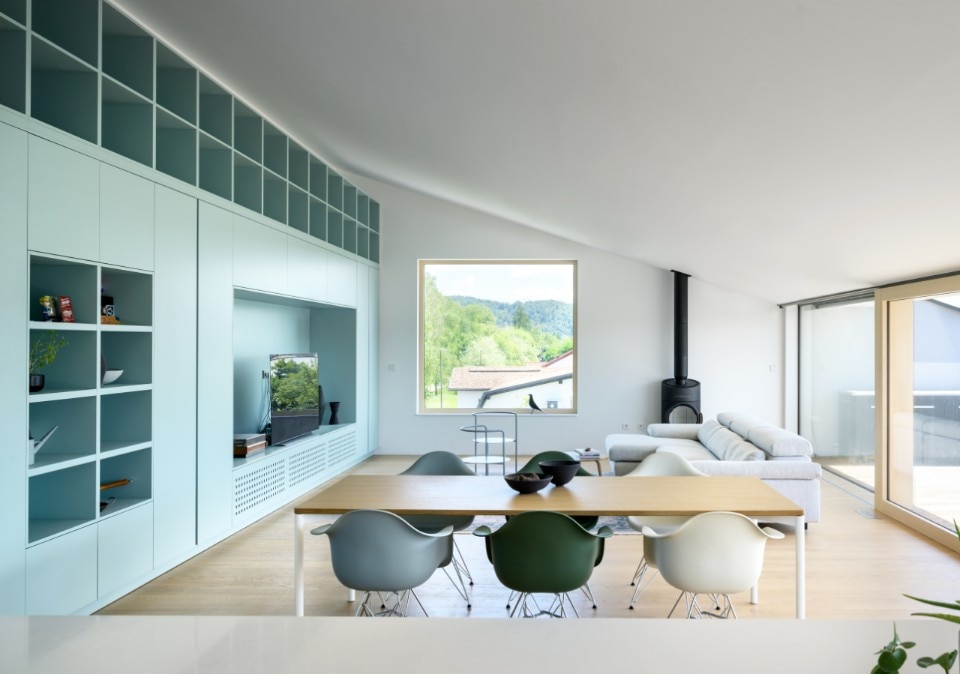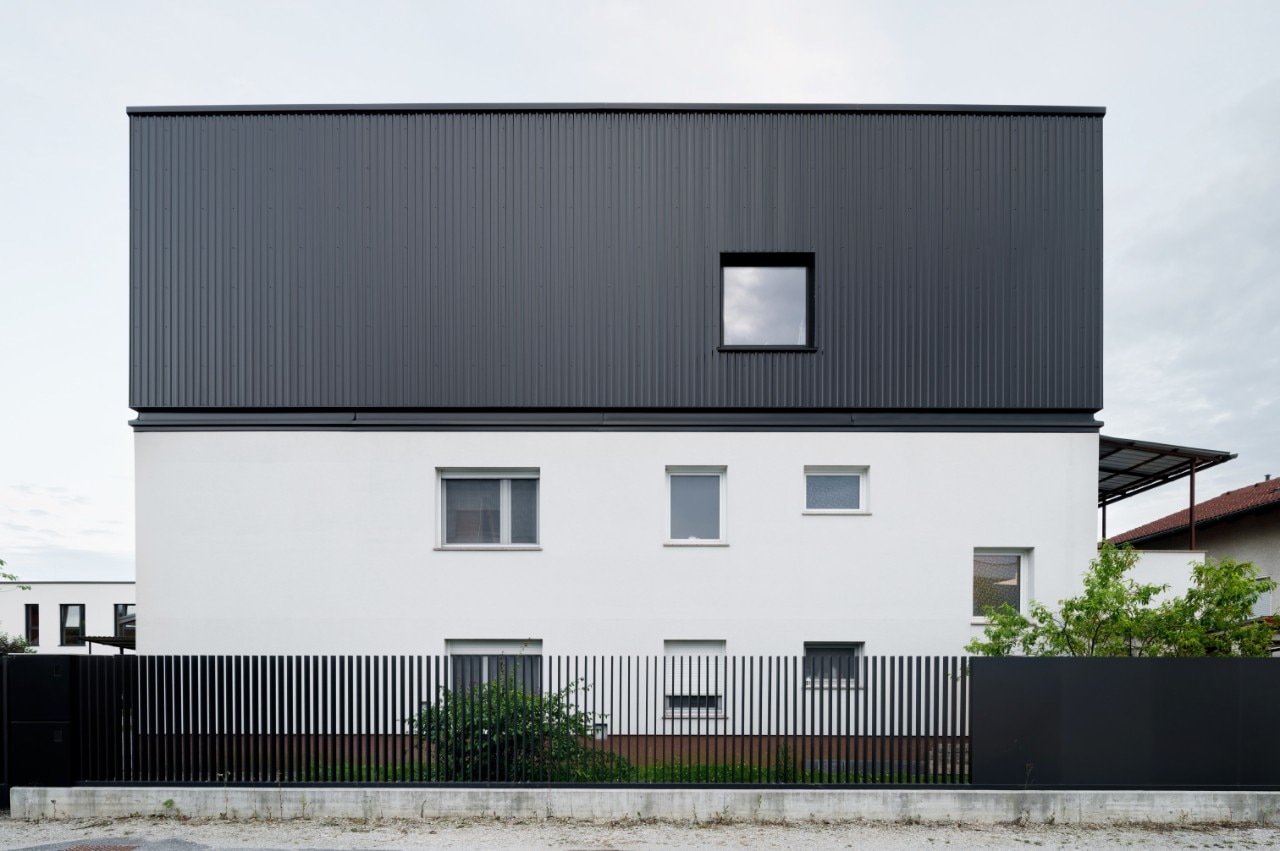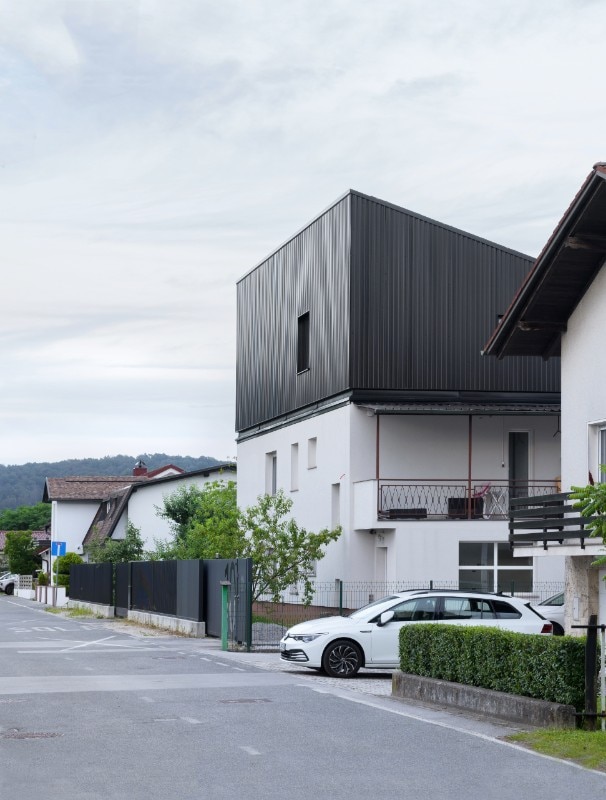The historic suburban villas around Ljubljana, inspired by the splendor of patrician mansions in the city center, although less luxurious and spacious, are sometimes a complicated legacy to manage for owners who wish to readjust their often rigid and fragmented layout to contemporary requirements for comfort and functionality.
This is the case with a garden villa built in the postwar period in the outskirts of the capital, characterized by a severe volume and a traditional distribution scheme. However, instead of adopting the more frequent solution of demolition, the client who was particularly attentive to the issue of environmental sustainability commissioned the firm ARHITEKTURA to carry out a project of renovation and expansion of the existing building, in believing that, as Carl Elefante titled, “the greenest building is the one that has already been built” (“Forum Journal,” volume 27, no.1, 2012).

Retaining the ground and first floors, which house domestic service functions in the smaller rooms, the intervention focuses on the previously unused attic, transformed into a common space covered by a single pitch, fluid and radiant with light flooding the space in from the generous windows on three sides (east, north and west) and from the winter garden to the south.
An explicitly contemporary lexicon of materials marks the historical layering by differentiating the contemporary intervention from the existing construction: the ex-novo volume, with cross-laminated wood structure, clad in dark-colored metal sheets, stands out decisively as the capping of the white plastered volume below, in an effective play of color and material contrasts.In the attic interiors, a palette of materials in neutral and delicate tones (light wood in the floors, white plaster in the walls and mint green in the living room's equipped wall) amplifies the dimensional perception of space.

Ethimo's latest collection is all about weaves
Inspired by the traditional craftsmanship of Eastern Spain and patios, the new collection designed by Studio Zanellato/Bortotto reimagines the aesthetics of comfort.
















